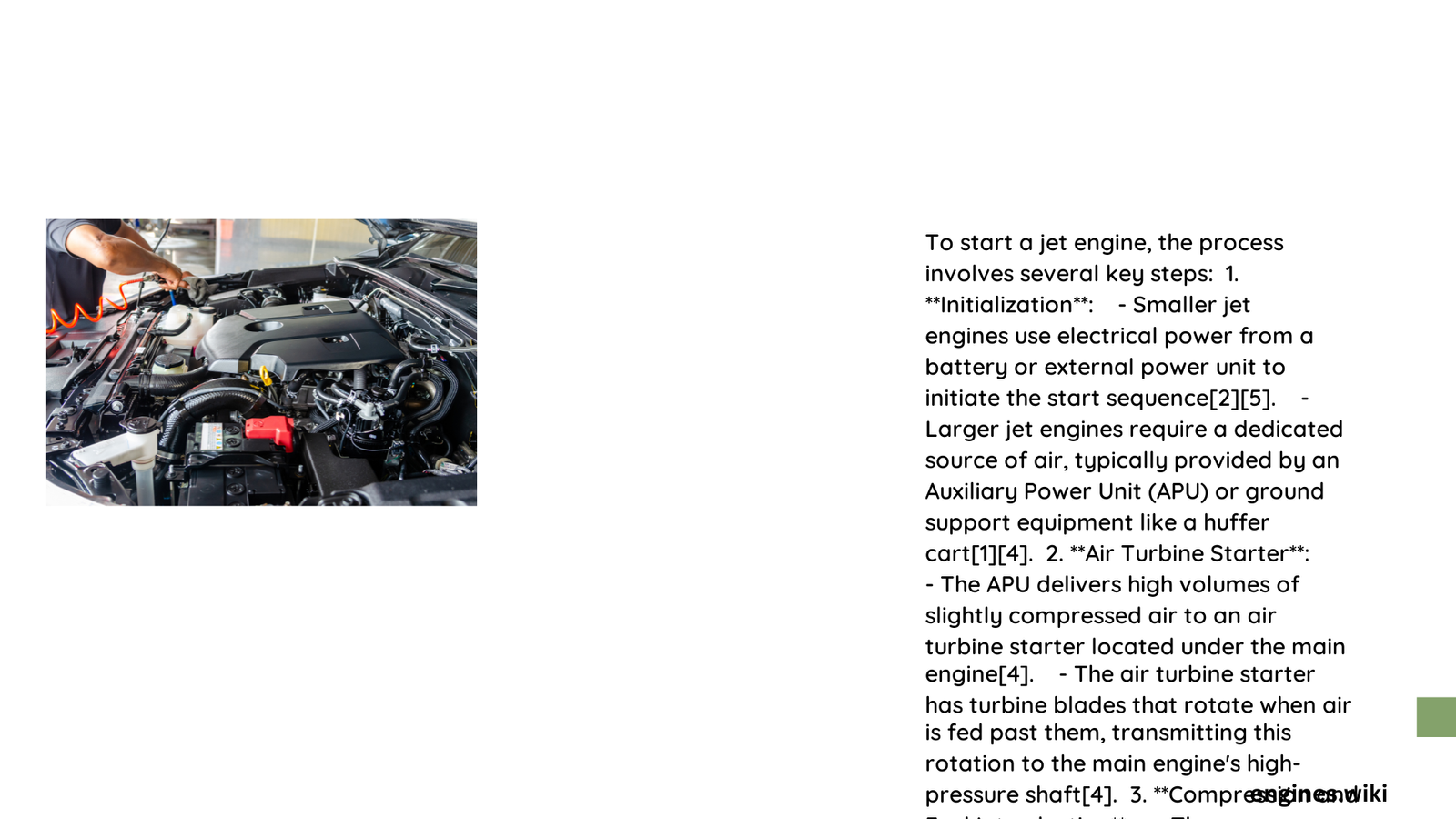Modern jet engines represent complex mechanical systems that require precise, multi-stage startup procedures involving electrical, pneumatic, and thermal interactions. The engine start sequence transforms a stationary turbine into a powerful propulsion system through carefully orchestrated mechanical and electrical steps, involving specialized components like starter motors, ignition systems, and electronic control units.
What Triggers the Initial Engine Rotation?
Starter Motor Mechanisms
Jet engine startup begins with rotational force generation through two primary methods:
- Electrical Starter Motors
- Used in smaller jet engines
- High-torque, series-wound electric motors
- Directly connected to engine’s compressor shaft
-
Provides initial rotational momentum
-
Pneumatic Air Turbine Starters
- Preferred in larger commercial aircraft
- Powered by compressed air from:
- Auxiliary Power Unit (APU)
- Ground support equipment
- External compressed air source
How Much Rotational Speed is Required?
| Engine Stage | Required RPM | Percentage of Max Speed |
|---|---|---|
| Initial Rotation | 2,200 RPM | 14% |
| Ignition Readiness | 4,500 RPM | 28.5% |
| Self-Sustaining | 7,000+ RPM | 45-64% |
What Happens During Fuel Introduction?

Precise Ignition Sequence
The fuel introduction process involves multiple critical steps:
- Electronic Engine Control (EEC) monitors core speed
- Igniter exciters activate at specific RPM thresholds
- High-voltage spark (several thousand volts) generates initial combustion
- Fuel metering systems precisely control fuel-air mixture
What Environmental Factors Impact Engine Start?
Temperature and Altitude Considerations
Different environmental conditions significantly influence the startup process:
- Cold Temperatures
- Require longer warmup periods
- May need additional lubrication procedures
-
Potential need for engine blankets or pre-heating
-
High Altitude Environments
- Reduced air density affects starter motor performance
- Potential adjustments in fuel-air mixture ratios
- Modified ignition timing requirements
What Are Common Startup Challenges?
Potential Failure Points
Critical components that might interrupt the startup sequence:
- Starter motor electrical failures
- Ignition system malfunctions
- Fuel system irregularities
- Electronic control unit errors
- Insufficient compressed air pressure
How Long Does a Complete Engine Start Take?
Typical Startup Duration
- Total startup time: 2-3 minutes per engine
- Stages include:
- Initial rotation
- Ignition activation
- Fuel introduction
- Reaching stable idle RPM
Technical Monitoring Parameters
Critical Startup Metrics
Pilots and engineers continuously monitor:
– N1 and N2 shaft speeds
– Fuel flow rates
– Combustion chamber temperatures
– Oil pressure
– Electrical system performance
Conclusion
The jet engine startup process represents a sophisticated dance of mechanical, electrical, and thermodynamic interactions, requiring precision engineering and robust technological systems.
